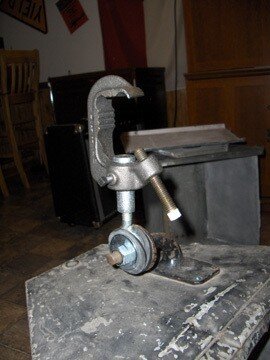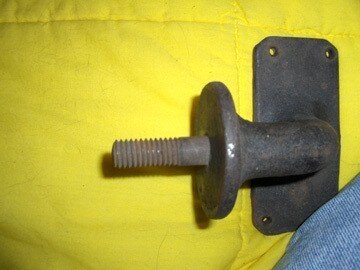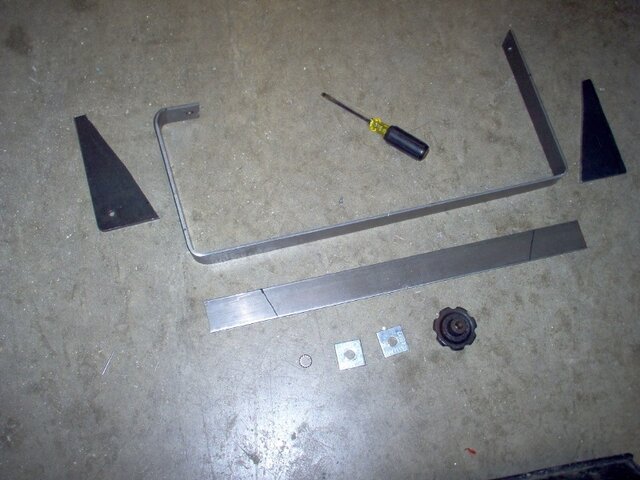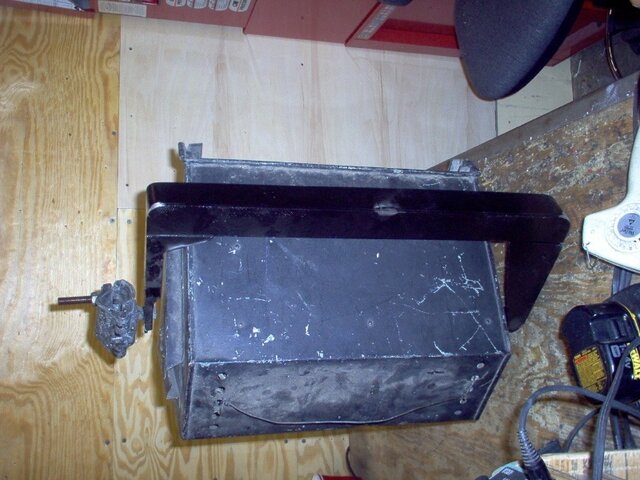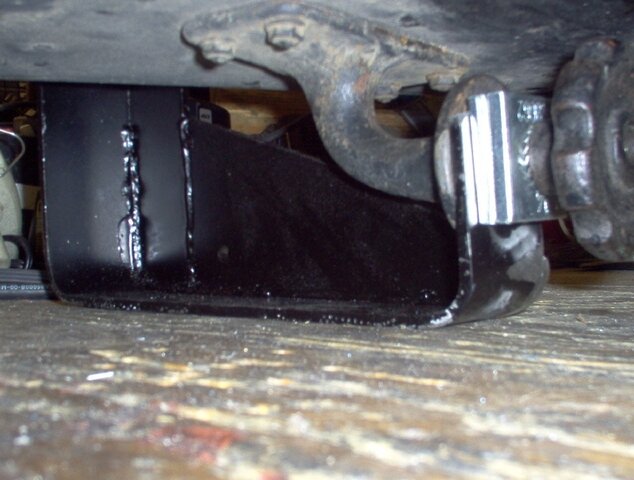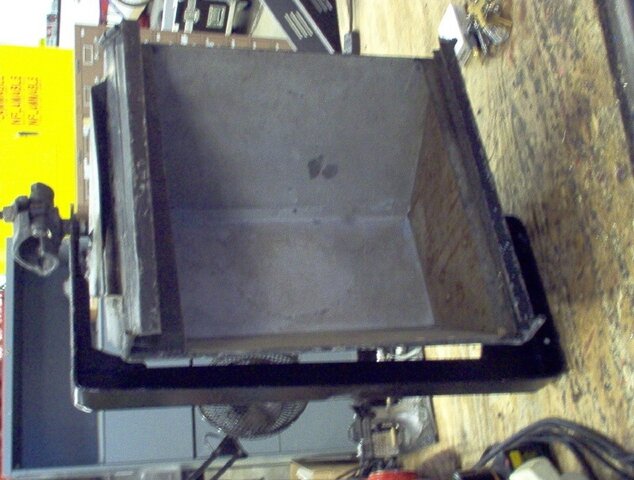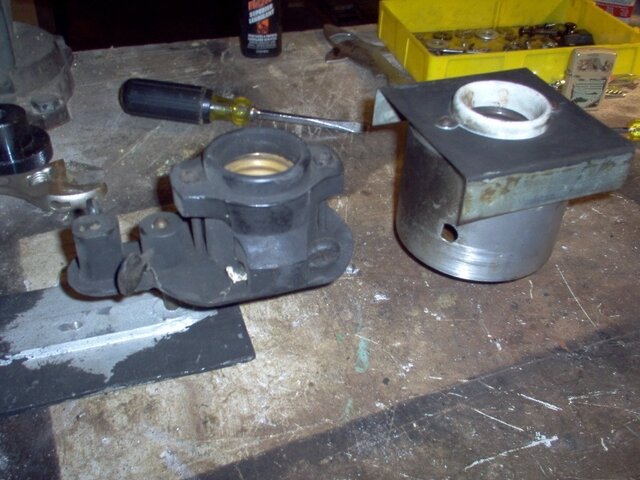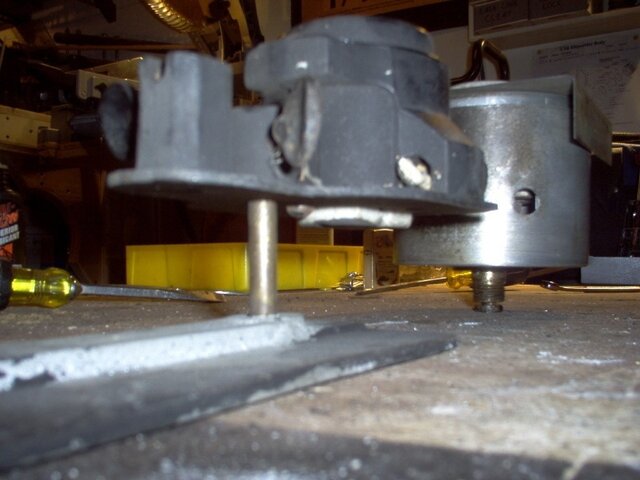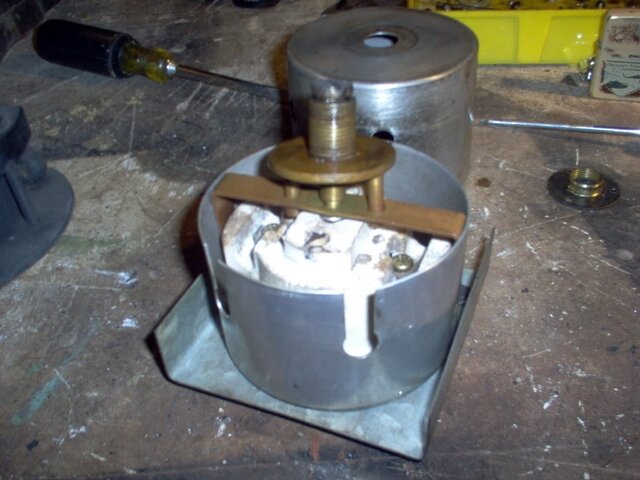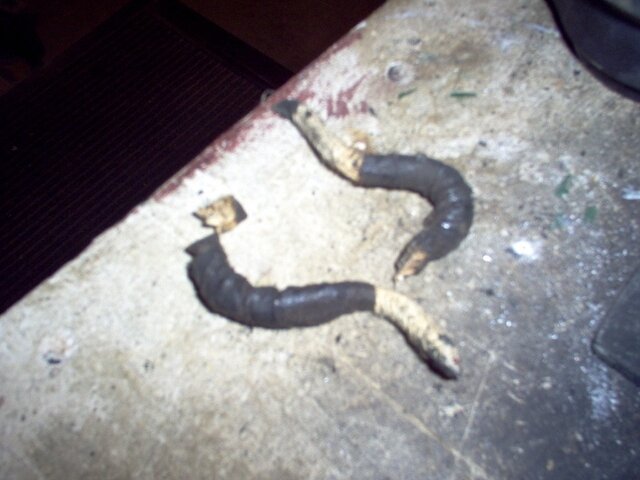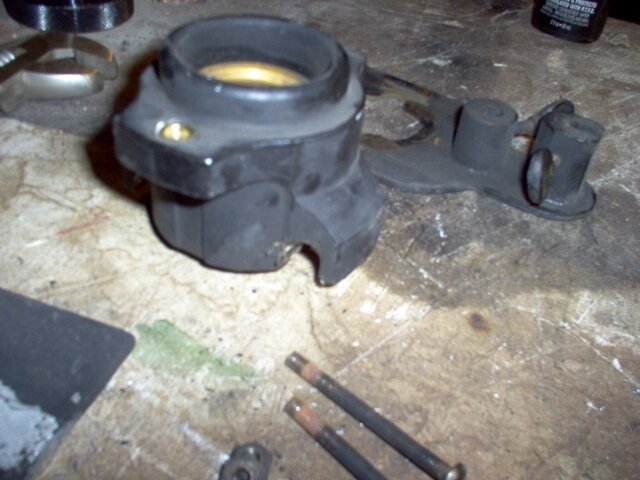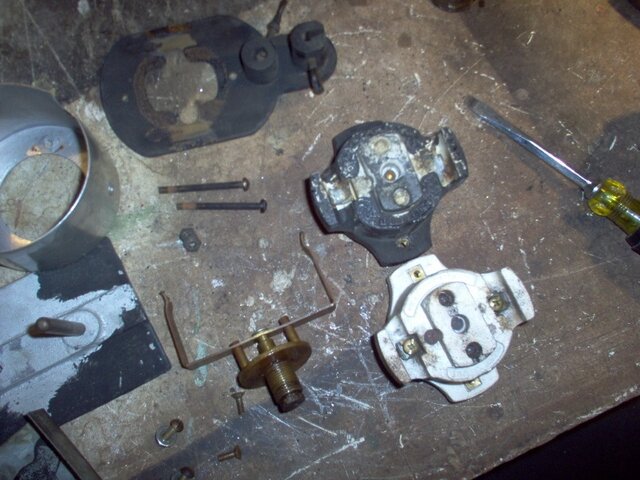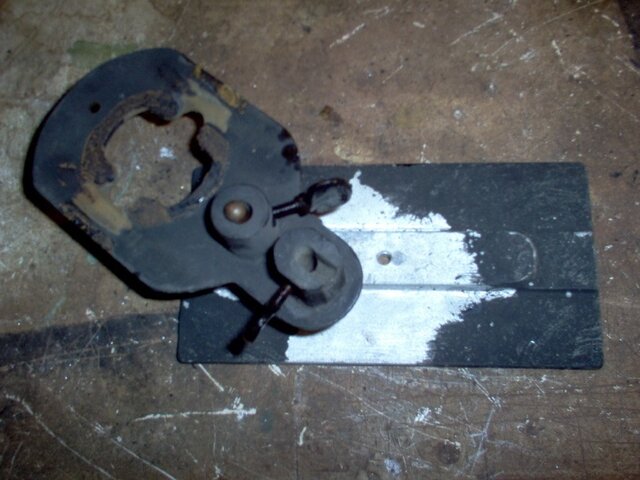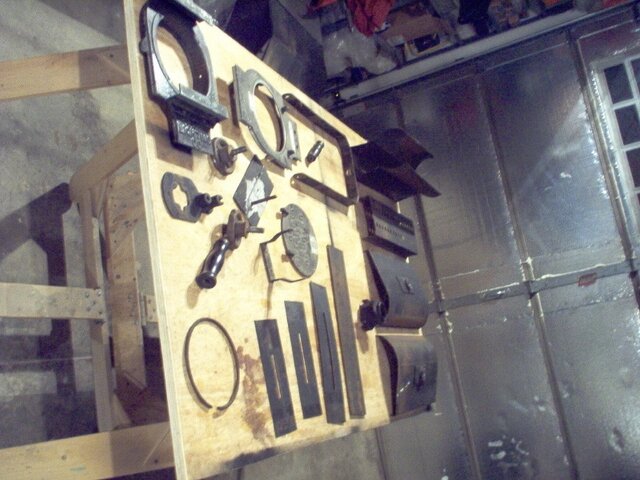There no doubt was a photo of a ovalite with a description of the two major types. Welcome to the forum also, hopefully you will long be able to help others just as curious in time as you are now.
Urr. stop don't remove the cast stand yoke and replace it by drilling for a standard two sided yoke. Instead just use the one sided yoke - remember base up, and make up a clamp that will still hang but preserve the intregrety of this antique without destroying it.
One side just requires slightly more steel on that side as opposed to less on two sides to keep it in place as per the fixture design. To drill it out for a yoke, ... might as well put catchup on a hot dog or more realistically replace all Lekos for Par can's in easier to maintain and being a sin for those in the future who get what you screwed up.
Two bulb bases are either a screw up by way of someone before you, or a slightly different fixture that's within concept of what will have been useful but not a pure Ovallite as the fore runner to what is todays' scoop.
If in gel frames a question about having extra gel frames for this fixure... it's a 1900's invention, most likely not extra if even any gel frames for such fixures. Cut and rivet or weld up your own - simple enough and more cost effective. While doing so, if you intend to use this fixture, you need a safety screen for it which by todays standards would protect the talent against large chunks of hot glass should this lamp fail catestropically. Simple as another gel frame added to the fixture that has hardware cloth or at least chicken wire welded or encased within it sufficient to keep back any large chunks of glass should the bulb fail.
On the ground wire, that's for the most part acceptable to modify the antique gear in having, as with giving the piece a proper strain relief. Normal placement of the grounding wire would be bolting within say three inches of the lamp base or within a few inches of where it enters the fixture dependant upon the fixture and best place to put the ground. Often, the closer the better to where the conductors terminate. Thru bolting for a 10-32 screw with lock washers is the norm without so much going into my own ways of doing it.
Have a look at your lamp base contacts also in if needed a replacement or cleaning and re-surfacing if needed.
If asking about a gel frame for the Kliegl fixtures, if 6" it's the normal 7.1/2" gel frames most fixtures or 6" in Leko or Fresnel or PAR 56 use. If on a 8" fixture, its' the same gel frame as a 8" Leko or Fresnel or PAR 64. There was a standardization of gel frame sizes in Lekos.
Best of luck and read much into the details of re-wiring, more to it than just adding new wires, or in disposal and removal of the asbestos than what's easy in doing it correctly.
Urr. stop don't remove the cast stand yoke and replace it by drilling for a standard two sided yoke. Instead just use the one sided yoke - remember base up, and make up a clamp that will still hang but preserve the intregrety of this antique without destroying it.
One side just requires slightly more steel on that side as opposed to less on two sides to keep it in place as per the fixture design. To drill it out for a yoke, ... might as well put catchup on a hot dog or more realistically replace all Lekos for Par can's in easier to maintain and being a sin for those in the future who get what you screwed up.
Two bulb bases are either a screw up by way of someone before you, or a slightly different fixture that's within concept of what will have been useful but not a pure Ovallite as the fore runner to what is todays' scoop.
If in gel frames a question about having extra gel frames for this fixure... it's a 1900's invention, most likely not extra if even any gel frames for such fixures. Cut and rivet or weld up your own - simple enough and more cost effective. While doing so, if you intend to use this fixture, you need a safety screen for it which by todays standards would protect the talent against large chunks of hot glass should this lamp fail catestropically. Simple as another gel frame added to the fixture that has hardware cloth or at least chicken wire welded or encased within it sufficient to keep back any large chunks of glass should the bulb fail.
On the ground wire, that's for the most part acceptable to modify the antique gear in having, as with giving the piece a proper strain relief. Normal placement of the grounding wire would be bolting within say three inches of the lamp base or within a few inches of where it enters the fixture dependant upon the fixture and best place to put the ground. Often, the closer the better to where the conductors terminate. Thru bolting for a 10-32 screw with lock washers is the norm without so much going into my own ways of doing it.
Have a look at your lamp base contacts also in if needed a replacement or cleaning and re-surfacing if needed.
If asking about a gel frame for the Kliegl fixtures, if 6" it's the normal 7.1/2" gel frames most fixtures or 6" in Leko or Fresnel or PAR 56 use. If on a 8" fixture, its' the same gel frame as a 8" Leko or Fresnel or PAR 64. There was a standardization of gel frame sizes in Lekos.
Best of luck and read much into the details of re-wiring, more to it than just adding new wires, or in disposal and removal of the asbestos than what's easy in doing it correctly.



